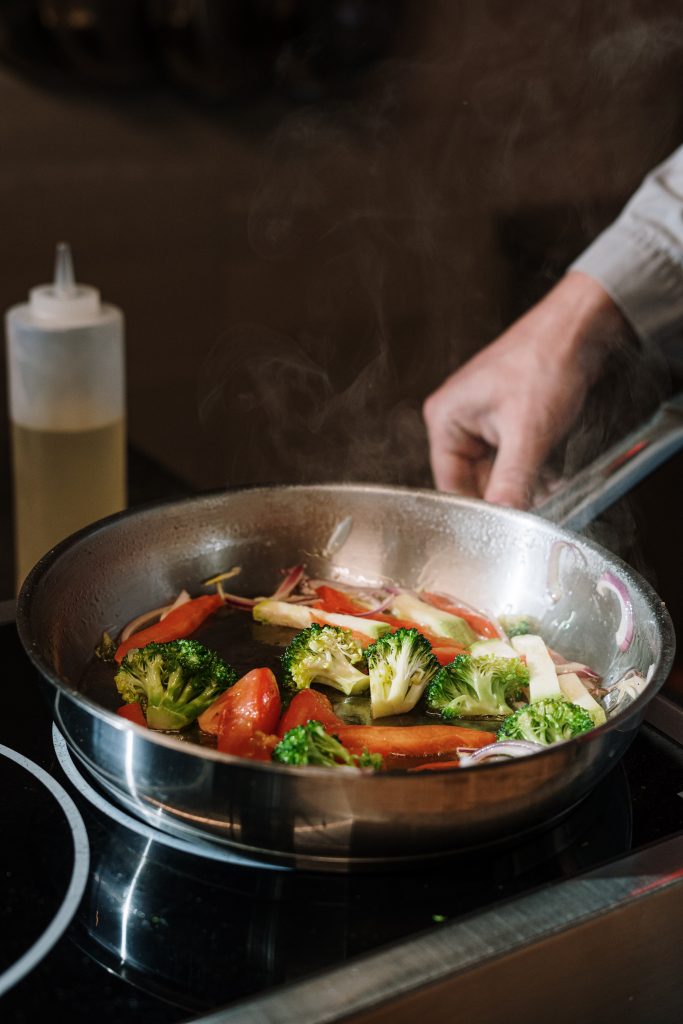Food Safety Focus for Health
October 1, 2020

In addition to COVID, now cold and flu season is coming! When it comes to keeping illness away what are your top tricks for staying healthy?
Food safety should be on the top of that list. According to the CDC, every year 1 in 6 Americans get sick, 128,000 are hospitalized, and 3,000 people die from eating contaminated food (CDC, 2020). So often, bacteria that cause food borne illnesses cannot be recognized by smell, sight, or taste. For this reason, it is so important to sanitize and handle foods safely. Not only can food pathogens cause illness, they can lower the immune system and make you more susceptible to other viruses and diseases. As everybody is different so is every immune system. However, certain population have less of an ability to fight off food borne illnesses. These populations include individuals over the age of 65, under the age of 5, women who are pregnant, as well as any person who has lowered immunity due to illness or medications.
How long do you think it takes a contaminated food to make you sick?
If you guessed a couple hours to a day, then you are partially right. Food borne illnesses can take anywhere from 1 hour to 50 days for the onset of symptoms to occur. The onset time is dependent on two different factors including the type of pathogen, the immune system of the person. Some bacteria take time to build up inside the host before symptoms occur.

Some simple tips for decreasing the risk of food borne illnesses in your kitchen include:
- Hand washing! The physical action of hand washing can eliminate many of the bacteria that have collected on the hands. Washing hands before beginning and after handling raw meats can reduce contamination while cooking.
- Clean counters, commonly touched surfaces, dishes and cooking utensils with HOT soapy water.
- When thawing meats, it is important to keep foods out of the temperature danger zone! Between 40◦ – 140◦ bacteria can multiply rapidly. Make sure to thaw meats in the refrigerator or if you have limited time, under cold running water (70◦ or below).
- Keep meats, poultry, and fish away from ready to eat foods such as vegetables and fruits. Meats have to be cooked to a certain temperature to kill bacteria, if they come in contact with foods that aren’t cooked to the same temperature that bacteria can remain, and cause food borne illnesses. For this reason, do not use the same plate for raw meat and cooked meat.
- Utilizing food thermometers can help ensure foods are cooked to the correct temperature for killing bad bacteria.
- Don’t leave used, wet towels lying around. They can be a breeding ground for bacteria! Hang towels to dry and change them often to prevent populating pathogens.
- Cutting boards can get deep cuts from use where germs can hide away. For this reason, don’t be afraid to throw out those old cutting boards and replace them.
- Food should not be left to cool for more than 2 hours (1 hour if it is above 90◦ outside). Letting foods cool on the counter longer than this puts them at risk for being in the temperature danger zone again. If you are on the road or somewhere that a refrigerator is not readily available, make sure to pack foods in a well-insulated cooler with ice or ice packs.
- Tasting food to see whether it is spoiled. Bacteria cannot be seen or smelled, sometimes it can’t even be tasted, but if bacteria are present in food though, even small bite can lead to a serious foodborne illness. If a food product is past its expiration date, especially dairy or meats, don’t take a chance, put it in the trash!
Here are some quick reference cooking temperatures:
- Ground Meats: 155◦ F
- Poultry: 165 ◦F
- Steaks, seafood, shelled eggs: 145 ◦F
- Pork & Beef Roast, Pork Chops: 145 ◦F
- Fruits, vegetables, grains (rice & pasta) and beans: 135 ◦F
- Temperature Danger Zone: 40◦F – 140◦F
Since foods have different cooking temperatures to kill pathogens, they should be stored separately if possible. If that is not possible then store foods in the following order from top to bottom.
- Ready-to-eat food
- Vegetables
- Fruits
- Foods that don’t require further cooking
- Seafood
- Whole cuts of beef or pork
- Ground meat and ground fish
- Whole and ground poultry
If you’d like to learn more visit the Academy of Nutrition and Dietetics to view 10 Common Food Safety Mistakes.
Thanks to Emily Jones, Dietetic Intern Oakwood University 2020 for contributing this blog post!
If you have any questions, you can contact our interns here!
References
Klemm, S. (2019). National food safety education month. Academy of Nutrition and Dietetics. https://www.eatright.org/homefoodsafety/safety-tips/food-poisoning/national-food-safety-education-month
Centers for Disease Control and Prevention. (2020). Food safety education month. https://www.cdc.gov/foodsafety/education-month.html
Subscribe to our newsletter
Get seasonal recipes, new trends in food and fitness, and dietitian jokes. There’s no spam, and you can unsubscribe at any time.
